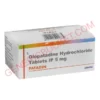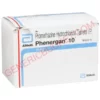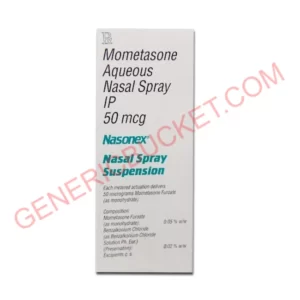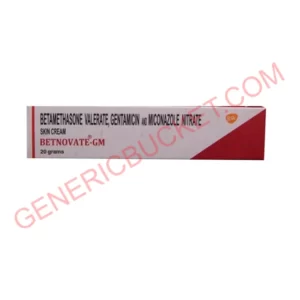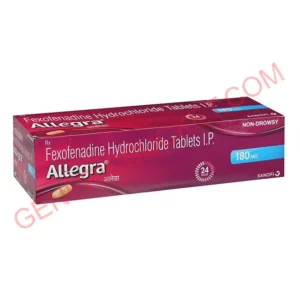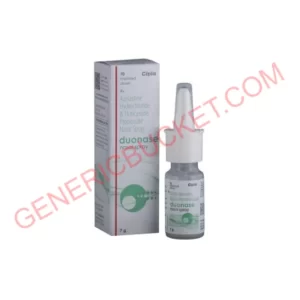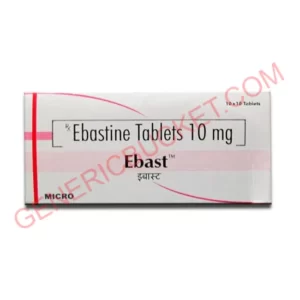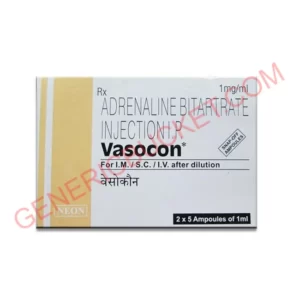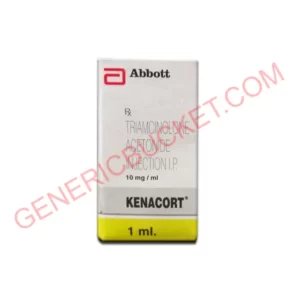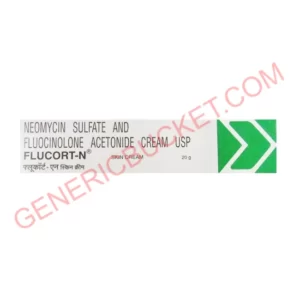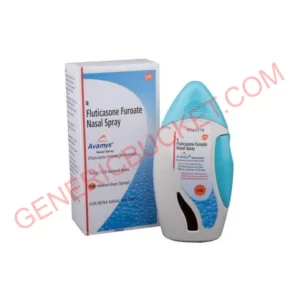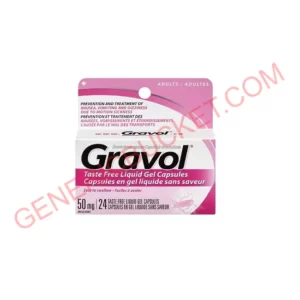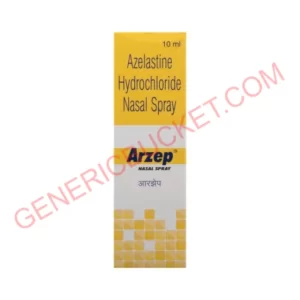Phenergan 25 Tablet (Promethazine 25mg)
$65.00 – $177.00
| Country of Origin | india |
|---|---|
| Dosage Form | Tablets |
| Generic Name | Promethazine |
| Indication | Nausea and vomiting due to chemotherapy |
| Manufacturer | Abbott India Pvt Ltd |
| Packaging | 10 tablets in 1 strip |
| Composition | Promethazine (25mg) |
| Phenergan 25 Tablet (Promethazine 25mg) | |||
| Pack Size | Price | Price/Unit | Add To Cart |
| 50 Tablet/s | $65.00 (1.3/unit) | $1.3 | |
| 100 Tablet/s | $123.00 (1.23/unit) | $1.23 | |
| 150 Tablet/s | $177.00 (1.18/unit) | $1.18 | |
What is Phenergan used for?
Phenergan tablets 25mg are used to treat a variety of allergic conditions, including allergic contact dermatitis, allergic reactions to drugs, hives (urticaria), and bites and stings, to relieve symptoms of redness, swelling and itching of the skin; also to relieve upper respiratory tract symptoms of allergic rhinitis, including nasal congestion, runny itchy nose and sneezing, caused by seasonal allergies like hayfever. Phenergan tablets 25mg are also used as an antiemetic to reduce nausea and vomiting due to several conditions including postoperative vomiting, irradiation sickness, drug-induced nausea and motion sickness. Phenergan tablets 25mg have sedative properties, which can be used to help with management of the symptoms of measles and chicken pox; also for short-term sedation.
How does Phenergan work?
Phenergan tablets 25mg contain promethazine, an antihistamine belonging to phenothiazine group of drugs that also has antiemetic (prevents nausea) and sedative properties. Histamine is a chemical released from mast cells, (cells involved in allergies) as part of the body’s defence mechanism during an allergic reaction. Histamine and binds to H1 receptors in small blood vessels causing them to leak, allowing white blood cells and blood proteins into the tissues. These infiltrating cells produce inflammatory chemicals (prostaglandins and leukotrienes) that cause tissue swelling and irritation, which are symptoms of an allergic reaction. Promethazine in Phenergan tablets 25mg is an H1 receptor antagonist and works by binding to histamine receptors and blocking the action of histamine without blocking its secretion. This action blocks histamine-mediated allergic reactions, relieving symptoms in the upper respiratory tract like nasal congestion, runny itchy nose and sneezing, and in the skin like redness, swelling and itching. Promethazine in Phenergan tablets 25mg also acts on the central nervous system (CNS). Some brain neurones (nerve cells) produce histamine and the action of histamine in the brain is involved in stress and anxiety reactions. Blocking these brain histamine receptors is thought to be responsible for causing sedation. The same CNS mechanism is also responsible for the anti-emetic effect of Phenergan tablets 25mg. Motion sickness is caused by conflicting information being received by the brain from the eyes and the vestibular system in the inner ear; messages sent by the ear suggest motion, whereas the messages sent by the eye suggest that the body is still. The conflicting information received into the brain stimulates the vomiting centre of the brain to induce the vomiting reflex. Promethazine in Phenergan tablets 25mg binds to histamine receptors on cells of the vestibular apparatus of the inner ear and is also thought to bind to histamine receptors on nerve cells in the brain to block the transmission of nerve impulses from the inner ear to the vomiting center in the brain, which in turn prevents transmission of nerve signals from the brain to receptors in the stomach, so that the vomiting reflex is blocked.
What does Phenergan contain?
Phenergan tablets 25mg contain the active ingredient promethazine hydrochloride, an antihistamine belonging to phenothiazine group of drugs that also has antiemetic (prevents nausea) and sedative properties. They also contain lactose, starch maize, povidone, magnesium stearate, hypromellose, macrogol 200, blue opaspray.
Treating allergy with Phenergan
Phenergan tablets 25mg contain the antihistamine promethazine, which is used to relieve symptoms of allergy in several allergic conditions, including allergic contact dermatitis, allergic reactions to drugs, hives (urticaria), bites and stings; also allergic rhinitis caused by seasonal allergies like hayfever. Histamine is a chemical released from mast cells, (cells involved in allergies) as part of the body’s defence mechanism during an allergic reaction and binds to H1 receptors in small blood vessels causing them to leak, allowing white blood cells and blood proteins into the tissues. These infiltrating cells produce inflammatory chemicals (prostaglandins and leukotrienes) that cause tissue swelling and irritation, which are symptoms of an allergic reaction. Promethazine in Phenergan tablets 25mg is an H1 receptor antagonist and works by binding to histamine receptors and blocking the action of histamine without blocking its secretion. This action blocks histamine-mediated allergic reactions, relieving symptoms in the upper respiratory tract like nasal congestion, runny itchy nose and sneezing, and in the skin like redness, swelling and itching.
Treating motion sickness with Phenergan
Phenergan tablets 25mg contain promethazine, an antihistamine that is used to control the nausea and vomiting associated with motion sickness caused by all forms of travel including, air, sea train or car travel. The inner ear contains the vestibular apparatus, comprising the membranous labyrinth structures of the cochlea and semicircular canals, where motion or changes in the body’s position is detected and continual information about body position is transmitted to the brain. Motion causes the endolymph (fluid that fills the inner ear) to trigger electrical signals via special sensory cells sending nerve impulses via neurotransmitters (chemicals that allow nerve cells to communicate) along the auditory nerve to the brain to be interpreted. Motion sickness is caused by conflicting information being received by the brain from the eyes and the vestibular system; messages sent by the ear suggest motion, whereas the messages sent by the eye suggest that the body is still. The conflicting information received into the brain stimulates the area postrema or vomiting centre of the brain to induce the vomiting reflex. Promethazine in Phenergan tablets 25mg binds to histamine receptors on cells of the vestibular apparatus of the inner ear and is also thought to bind to histamine receptors on nerve cells in the brain and this blocks the transmission of nerve impulses from the inner ear to the vomiting center in the brain, which in turn prevents transmission of nerve signals from the brain to receptors in the stomach, so that the vomiting reflex is blocked. Phenergan tablets 25mg are also used to reduce nausea and vomiting due to several conditions including postoperative vomiting, irradiation sickness and drug-induced nausea.
Phenergan for sedation
Phenergan tablets 25mg contain promethazine, an antihistamine that has sedating properties. Promethazine in Phenergan tablets 25mg is an H1 receptor antagonist and works by binding to histamine receptors in various parts of the body including the brain. Some brain neurones (nerve cells) produce histamine and the action of histamine in the brain is involved in stress and anxiety reactions. Blocking these brain histamine receptors is thought to be responsible for causing sedation.
What are the side effects of Phenergan?
The most commonly reported side effects when taking Phenergan tablets 25mg include: dry mouth, gastro-intestinal disturbances (diarrhoea, constipation, nausea, vomiting or abdominal pain) loss of appetite, tiredness, sleepiness, restlessness, dizziness, blurred vision.
When should Phenergan not be used?
You should not use Phenergan tablets 25mg if you:
- are allergic to promethazine or any ingredients in Phenergan
- are allergic to sulphites, benzoates or phenothiazines
- are pregnant or are breastfeeding
- have had jaundice induced by other phenothiazine derivatives
- are taking medicines that interact with Phenergan, including: monoamine oxidase inhibitors (MAOIs) (up to 14 days previously), tricyclic antidepressants, sedatives and hypnotics, opioid analgesics, barbiturates
Phenergan tablets 25mg should not be used for children under 2 years or for anyone in a coma.
What medications interact with Phenergan?
Several medications interact with Phenergan tablets 25mg to increase side effects and can cause a serious reaction and should either not be taken while you are taking Phenergan or only after discussion and instruction from your doctor: including: monoamine oxidase inhibitors (MAOIs) (up to 14 days previously, tricyclic antidepressants, sedatives and hypnotics, opioid analgesics, barbiturates.
How should Phenergan be taken?
You should take your Phenergan tablets 25mg swallowed whole with a glass of water. The dose you take and how often depends on what you are being treated for and your doctor’s recommendation. For allergy and sedation you should take your Phenergan tablets 25mg at night. For travel sickness you should take one tablet the night before travel and you can take another dose the next day, provided 6-8 hours has elapsed. For nausea and vomiting you should take your Phenergan tablets 25mg every 4 to 6 hours as recommended by your doctor. You should continue to take your Phenergan tablets 25mg for as long as your symptoms persist, or as recommended by your doctor but for no longer than 10 consecutive days.
How long should you take Phenergan?
You should continue to take your Phenergan tablets 25mg for as long as your symptoms persist, or as recommended by your doctor but for no longer than 10 consecutive days.
Missed dose of Phenergan
If you miss a dose of Phenergan tablets 25mg take it as soon as you remember, unless it is time to take the next dose, then skip the missed dose. Do not take a double dose.
How should Phenergan be stored?
You should store your Phenergan below 25°C in a cool dry place.
Related Product
Related products
Allergy
Allergy


